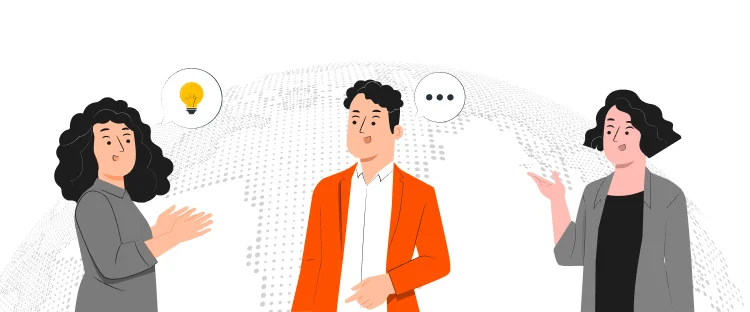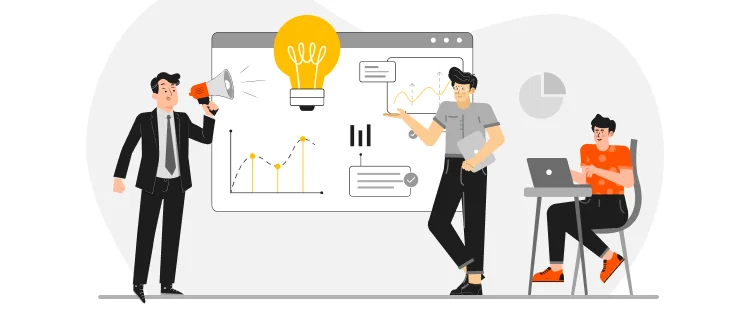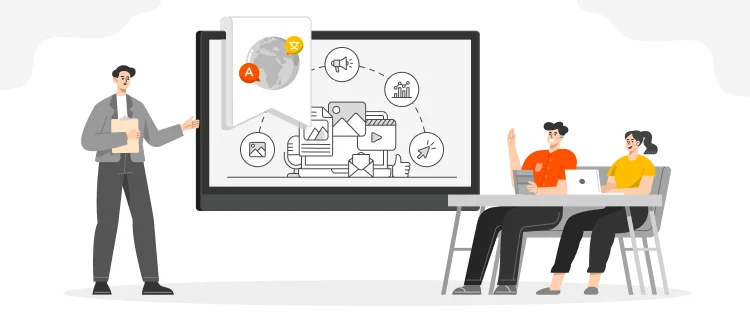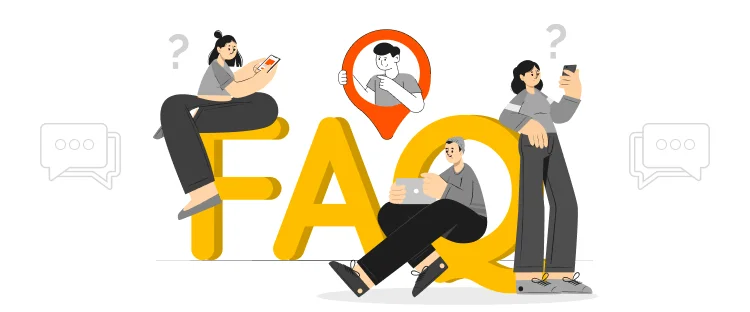By: Eric Nelson Posted on Fri, 26-01-2024

The next big thing in information technology is artificial intelligence. Sci-fi movies have often portrayed AI as a subservient being created to aid mankind but somehow develops a consciousness and wages war for equal rights or control. However, current AI technology does not have the capability of such impressive feats. It is actually quite basic in its current form. However, the potential does exist, and we will see a lot of it in 2024. The goal of using AI for translation is to minimize cost, time constraints, and generally make it easier for people to translate languages. Current products are being used to translate websites, for tourism purposes, education, and a lot more. And it is easy to admit that these AI-based translation applications do make life easier.
However, since AI translation applications rely a lot on machine learning. It can only produce what it knows, there is no form of critical thinking in artificial intelligence. And if there is, it is not yet common technology or easily accessible to the general public. Hence, these applications are often unable to grasp the intent and can provide inaccurate translations. For example, the idiom ‘Kick the Bucket’ means to die, but AI will probably translate it literally.
Though AI translation applications have made significant strides in the past decade. It still has certain limitations, which we will discuss. However, it is important to note that developers are working on fixing such issues, and we can expect 2024 to be the start of more reliable AI translation applications. But since there are thousands of languages, we can expect strides in the more common ones like English, Mandarin, Hindi, Spanish, French, Italian, Arabic, and other popular languages.
We might see developers incorporate more advanced context-aware algorithms that better understand the nuances of language. Allowing AI translation applications to provide more accurate translations in the contextual sense. This is currently a big problem and has led to some embarrassing to dangerous situations. There was widespread confusion in certain cities and towns during the coronavirus pandemic. For example, in a US city, the sentence ‘Mexican residents are not obliged to take the vaccine’ was translated to ‘Mexicans do not need vaccines’ in Spanish.
Developers are working on ways to improve AI’s understanding of cultural nuances, regional variations, and idioms. If not this year, but soon enough, AI will be able to distinguish cultural sensitivities and guide users about them. For example, the mention of cows as food is considered an offense in India. While it is enjoyed around the world as a common delicacy. If your target audience is India and you are launching a restaurant, AI will let you know.
Idioms are more than often related to culture. Hence, you need cultural understanding to get the gist of it. In AI translations, idioms are translated literally and leave the user in awe of what has transpired. But soon, such issues will not exist. AI will swap idioms for culturally appropriate ones. However, it all depends on the process of information. Chat-GPT is connected to the internet, and such applications may need it as well. Through the internet, these applications may find specific databases to verify accurate idiom translations.
A language is usually accompanied by variations in dialect and accents. This can often confuse the AI translation bot and lead to frustration for users. AI may also misunderstand a certain word during speech translation. For example, whether and weather sound similar and it may translate the wrong word. Such issues will occur less commonly in 2024 and will soon fade away.
Future models are being trained on more advanced and extensive data sets. Enabling them to understand complex words and offer better replacements. These will make AI translations more accurate, relevant, and precise.
Currently, certain AI translation software allows you to set the tone, intent, and more. However, these emotional cue recognitions are not yet all that accurate. However, we will see voice translations and written translations that better recognize emotional input.
There is a big possibility that by the end of next year, we will see AI translation applications that will offer human intervention options. For example, for extra cost, you can have your AI translated document proofread by a human in a specified time frame. Ensuring critical forms of data are translated with complete accuracy.
Currently, applications like Duolingo do a good job of teaching basic language skills to users. In the coming time, we are likely to see avatar-based teachers who respond and answer questions. Moreover, these avatars will also correct your mistakes like a teacher and track your record. The technology is expected to hit the market this year with more intensity. Though such applications do exist currently, they are not all that great. To be fair, it may take somewhere between 3-5 years to perfect the technology. But for major languages like English and Arabic, we will see good variations this year.
The metaverse is like a virtual world where digital currencies, properties, and other forms of intangible objects exist. Unlike the physical, tangible world, the virtual world has no boundaries. And for that reason, the metaverse will host individuals from all over the world. Moreover, there isn’t just one metaverse. There are numerous and many are in the making as well. This poses an issue, that in one space there may be numerous nationalities, all with their languages, dialects, and cultural relatabilities. So how will they effectively communicate when the main goal of the metaverse is to create a world without borders? What languages will be spoken in the metaverse world?
Well, there are certain technologies in the making and some have even started trial phases. These AI machine translation applications will utilize sound, imagery, typing, and other forms of prompts to produce translations. Now here is the special bit, this software will be relevant for the user and translate multiple languages at once into the user's desired languages. Moreover, it will do the same for everyone. Another fun fact is that no one has to buy it. The metaverses may already incorporate it into the service they provide.
Such a technology when released for the general public will be a game changer. Business meetings, tourism, social meetings, and so much more could be made easier for multicultural societies. We may see the technology immersed with mobile phones, glasses, or even helmets. But one thing is for sure, this technology already exists. They are just perfecting it and we may see it roll out in 2024!
There are various AI translation tools that are popular. Moreover, there are thousands of different AI-based translation applications available on the Play and App Store. Each has its own algorithms and technologies. Here are the top 3 AI translation applications:
Currently, one of the most popular and used AI translation applications is Google Translate. It offers translation in 100+ languages. Google Translate uses a unique combination of neural machine learning and stat-based translation generations.
Of course, as natural rivals, Microsoft also brings an AI-based translation application to the market. Microsoft translation application can translate 60+ languages. Its system is based on neural machine learning and the application is crafted to learn and improve translations as it is used.
Deep L is fairly new but with innovative technology and loads of marketing has broken into many AI translation application lists. The application provides translation in over 7 languages. It also uses neural machine learning technology and it is constantly learning to provide more accurate translations.
There are numerous benefits of using AI for translations. Some of the most important ones are:
AI-based translations can be done in a matter of seconds or minutes. While human translators can take hours or days. The speed of AI translations makes it ideal for those with time constraints.
AI translations are either cheap or free. Human translators need to be paid according to the scope of the project.
Humans need rest and to take care of themselves. While AI machines do not need such things. AI machine translations are at the mercy of your fingertips.
You can communicate with various language speakers, and they can communicate with you in real time. This makes AI translation tools very handy for business or pleasure.
AI translations are the future of the industry. A collaboration between humans and AI technology will help improve the quality, consistency, and accuracy of translations. It is only natural for technologies to improve with time. Take the computer, for example, 8GB of RAM got a man on the moon with a computer that could fit a large room in the 1960s. Now, that same 8GB of RAM is used in children's toys and computers 500 times more powerful are held in our pockets. 2024 will be an exciting year for AI translations, with more exciting times to come.

Colorado is said to be one of the best places to do business because the business environment is very friendly
Read More
The global marketplace has become an attractive place for brands and businesses, where they strive to create a presence of
Read More
CAD, or computer-aided design and drafting (CADD), is the use of computer technology for design and design documentation. CAD software
Read More
Many global companies, foreign governments and Iranian are hoping to see an increase in investment in Iran after declaring the
Read More
Artificial intelligence has taken a big space in almost every industry. There is also a widespread acceptance that AI is
Read More
Persuasion is all about manipulating other people behavior. At first it might sound immoral but it doesn’t have to be.
Read More
Now days everyone is searching for good ideas for their company they wanted to be more creative, they wanted to
Read More
Technology has now much diverse roots in this age of development. Now it is not wrong to say, that you
Read More
Localization is the practice of altering the functional properties of a product and also its characteristics. This is easily done
Read More


Document Translation
Professional document translation by native expertsApp Localization
Get more downloads by adapting your app for different target marketsVideo Translation
Multilingual translation and subtitling servicesWebsite Localization
Adapt your website into multiple contexts for global reachSoftware Localization
Adapt your software for global usersGame Localization
Reach new players with localized gameplayMTPE
Refine AI translations for natural fluencyBusiness Translation
Professional translation for business documents and websitesDTP & File Conversion
Professional DTP and File conversion, supporting multiple file formatsProofreading
Perfect your content with expert review© Copyright 2026 MarsTranslation